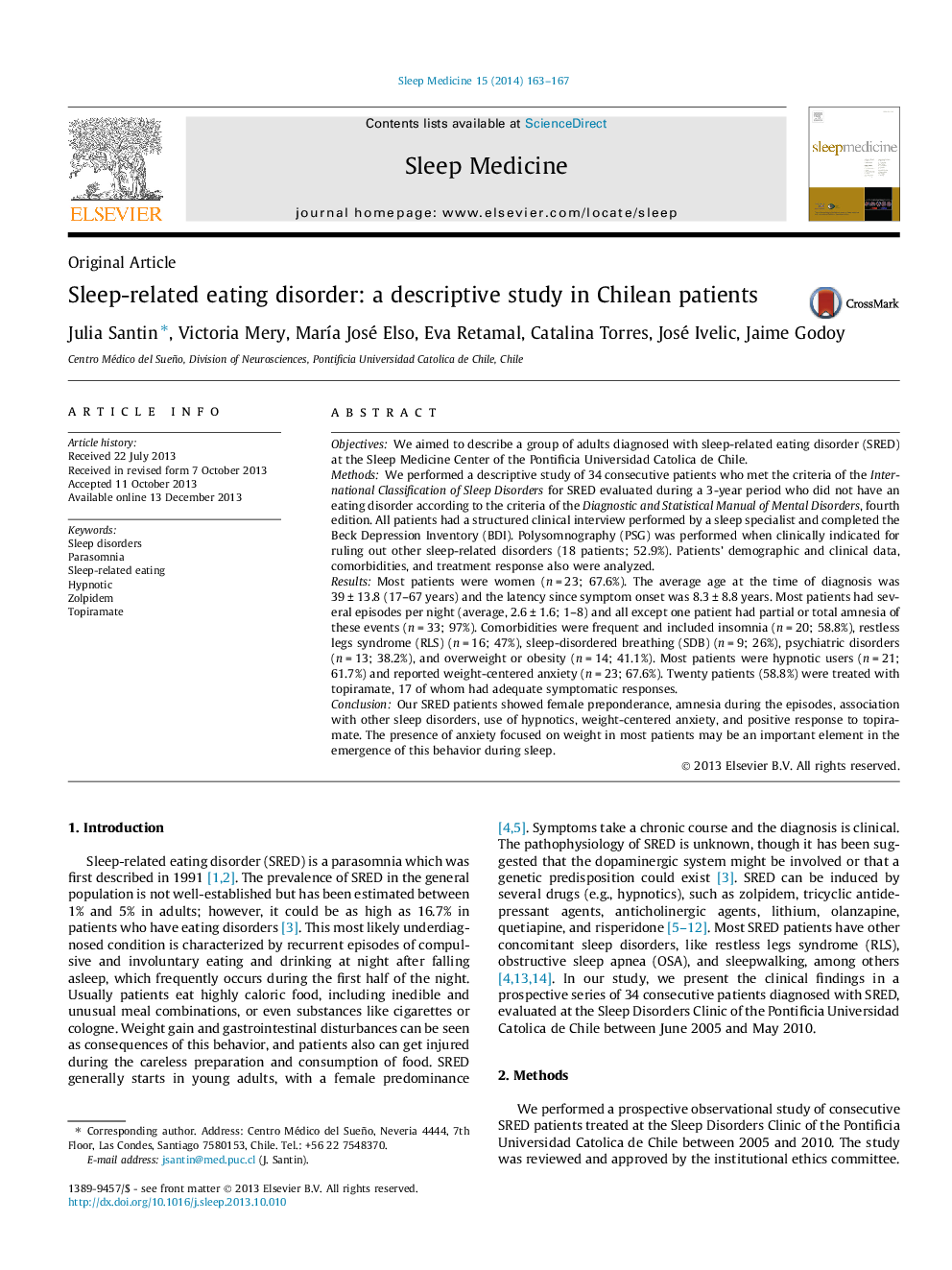| Article ID | Journal | Published Year | Pages | File Type |
|---|---|---|---|---|
| 3176236 | Sleep Medicine | 2014 | 5 Pages |
ObjectivesWe aimed to describe a group of adults diagnosed with sleep-related eating disorder (SRED) at the Sleep Medicine Center of the Pontificia Universidad Catolica de Chile.MethodsWe performed a descriptive study of 34 consecutive patients who met the criteria of the International Classification of Sleep Disorders for SRED evaluated during a 3-year period who did not have an eating disorder according to the criteria of the Diagnostic and Statistical Manual of Mental Disorders, fourth edition. All patients had a structured clinical interview performed by a sleep specialist and completed the Beck Depression Inventory (BDI). Polysomnography (PSG) was performed when clinically indicated for ruling out other sleep-related disorders (18 patients; 52.9%). Patients’ demographic and clinical data, comorbidities, and treatment response also were analyzed.ResultsMost patients were women (n = 23; 67.6%). The average age at the time of diagnosis was 39 ± 13.8 (17–67 years) and the latency since symptom onset was 8.3 ± 8.8 years. Most patients had several episodes per night (average, 2.6 ± 1.6; 1–8) and all except one patient had partial or total amnesia of these events (n = 33; 97%). Comorbidities were frequent and included insomnia (n = 20; 58.8%), restless legs syndrome (RLS) (n = 16; 47%), sleep-disordered breathing (SDB) (n = 9; 26%), psychiatric disorders (n = 13; 38.2%), and overweight or obesity (n = 14; 41.1%). Most patients were hypnotic users (n = 21; 61.7%) and reported weight-centered anxiety (n = 23; 67.6%). Twenty patients (58.8%) were treated with topiramate, 17 of whom had adequate symptomatic responses.ConclusionOur SRED patients showed female preponderance, amnesia during the episodes, association with other sleep disorders, use of hypnotics, weight-centered anxiety, and positive response to topiramate. The presence of anxiety focused on weight in most patients may be an important element in the emergence of this behavior during sleep.
